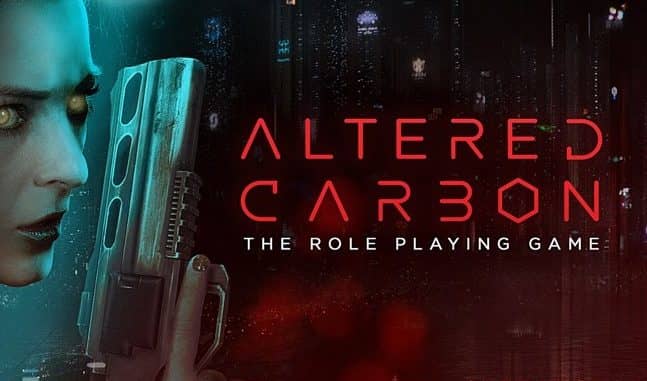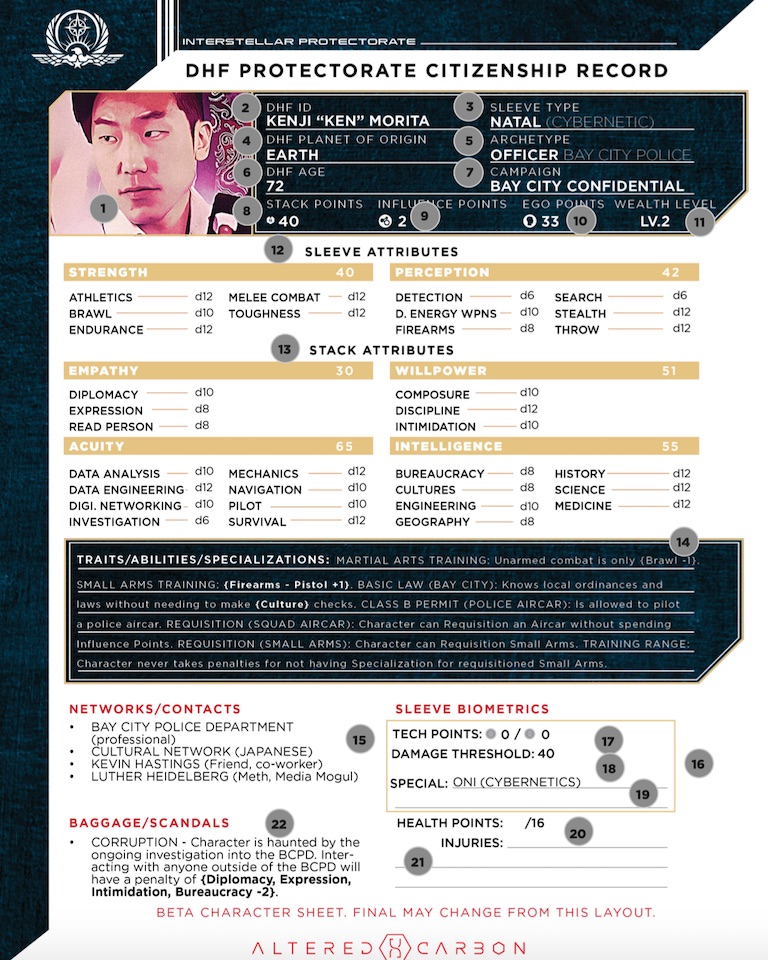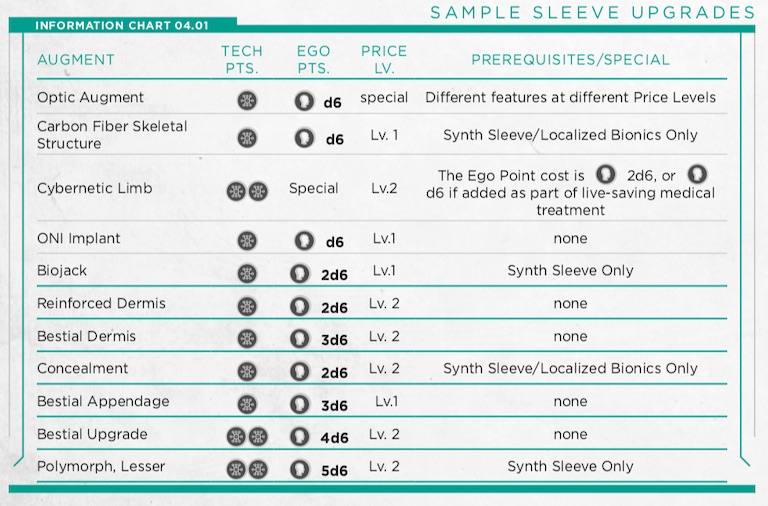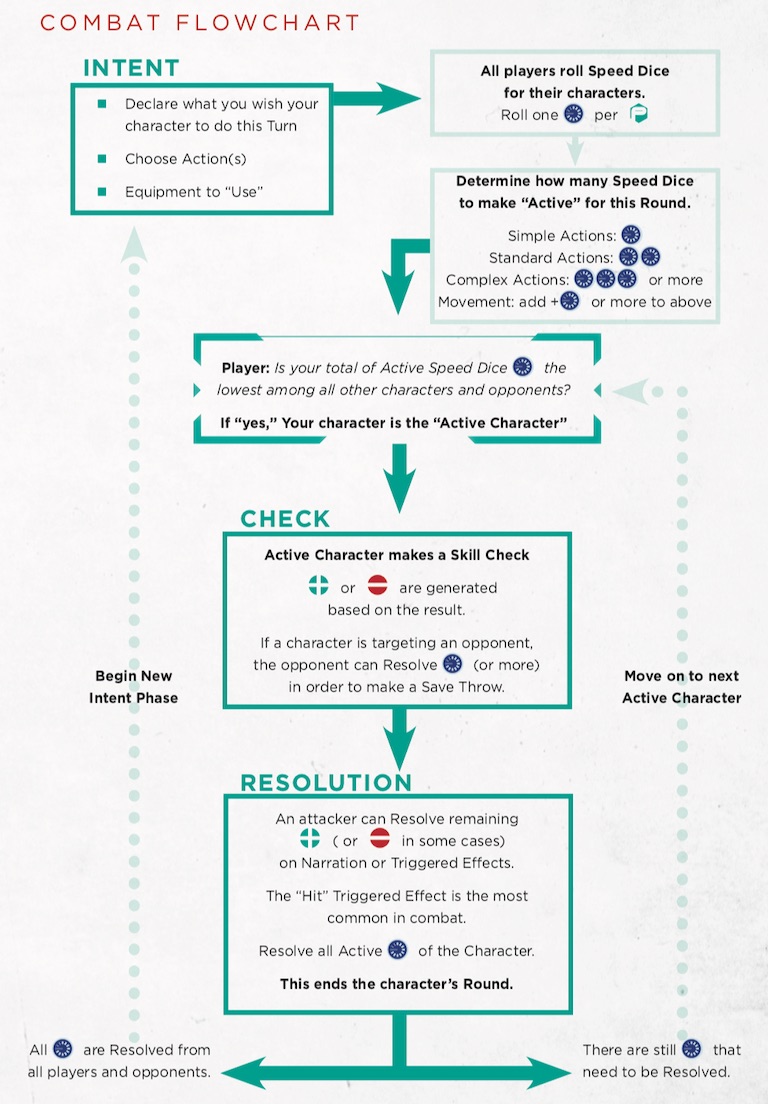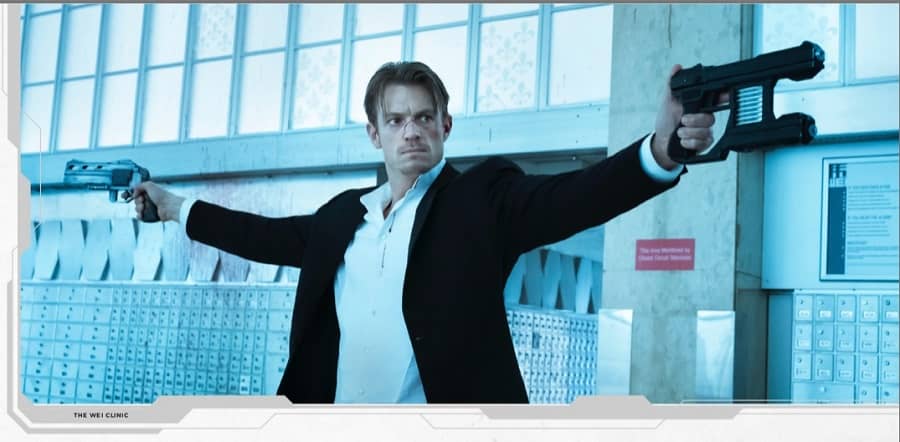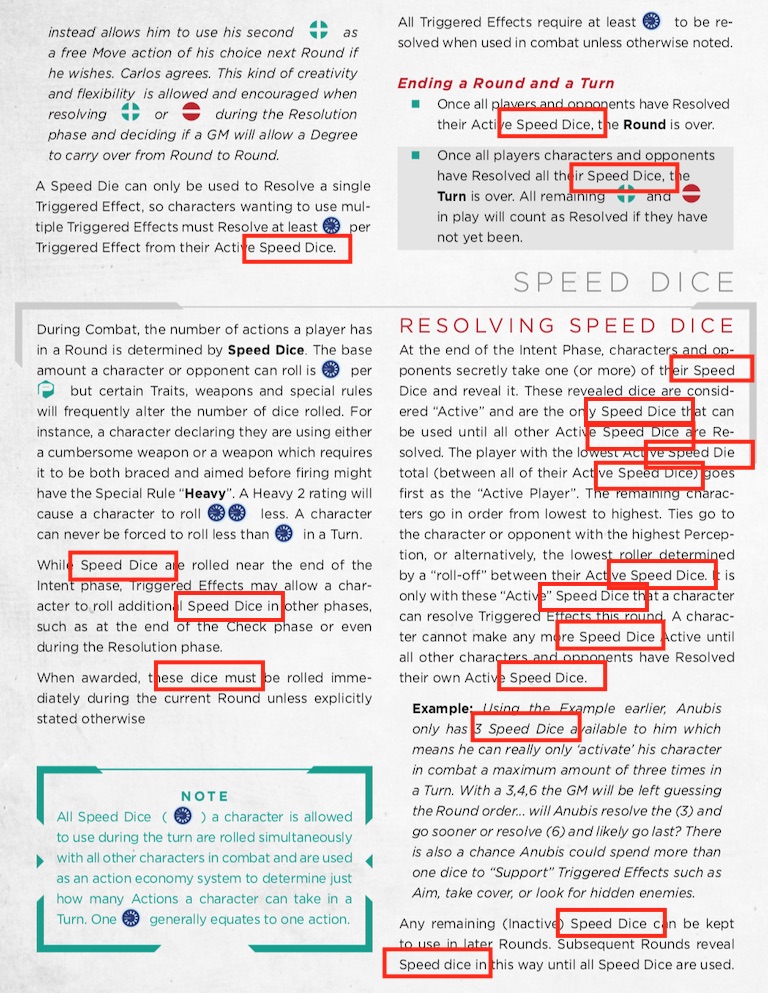Altered Initiative in the Altered Carbon RPG
In February this year, Hunters Entertainment launched a wildly successful Kickstarter for the Altered Carbon tabletop RPG. When it closed in early March, they had raised $372,547, having only asked for $20,000. While the creators finish the product for later this year, they provided a rules summary and scenario, which you can get from their website (where they call it a quick start guide).
The RPG is based on the Netflix series, Altered Carbon, which just released Season 2. In turn, the series took as its source material Richard K. Morgan’s book series, first published in 2002. The series is unabashedly cyberpunk. I recall reading somewhere that Morgan wanted to take every cyberpunk trope and cliche, toss it together, and see what comes out. The spin that the series takes to differentiate it was to turn whole mind upload or uploading our consciousness to a digital source into a routine, cheap task via a device called a cortical stack.
Human consciousness, called digital human freight or DHF, was first digitized to support the colonization of other star systems. DHF on cortical stacks — or just stacks — allows consciousness to be “installed” in a body. Hence, pretty much everyone has a stack, and they are able to be installed in a new body to continue their lives. (Interestingly, the technology that enabled the implantation to be installed in a body was recovered from alien ruins found on Mars–and the aliens are referred to as the Elders.)
The cultural effect is that bodies become vehicles for consciousness and are viewed as no longer “part” of a person. They are even called sleeves — cheap and disposable. Die? Get a new sleeve. The whole notion of death skews. Life in the physical form cheapens. What’s the big deal if you die and can come back?
The best moments in the books and Netflix series are when they pause long enough to give space to those ideas. Roman Catholics are opposed to the whole notion of re-sleeving and argue for the natural course of life. Can a potential witness to a crime — a victim herself — be legally required to be re-sleeved to provide legal evidence despite her religious convictions and statement to not be re-sleeved?
In the series, body counts are high. Violence and sleeve death are near constant occurrences. That said, the concept of real death — RD — does exist. If your stack is destroyed, you are done for. This is usually accomplished by a deliberate action, though a severe enough accident can destroy the stack as well.
The other cyberpunk tropes of extreme wealth disparity, flying cars, hacking, and noir settings play out in the Altered Carbon universe against that backdrop. The RPG intends to bring that to life at the tabletop.
The rule summary release by Hunters Entertainment is of a system still in development, so much could still change. Given that, my thoughts on the rules try to take that into consideration.
What does the game get right?
Sleeves and the DHF first and foremost. A character’s attributes are divided amongst six characteristics, which in turn are distinguished between sleeve and DHF characteristics. Your current sleeve defines Strength and Perception. Your DHF defines Empathy, Acuity, Willpower, and Intelligence. Change your sleeve, change your Strength and Perception. Sleeves come in a variety of forms: birth, natal, clone, and synthetics of various quality. Birth, natal, and clone sleeves are identical in their benefits, for they are different ways to obtain a biological body.
The game tracks what it calls Ego points, which serve a number of functions in the game. The primary being that the more you transfer from one sleeve to another, the more you risk fracturing your DHF. Lose enough Ego, and your identity is lost. While not impossible to restore Ego points, characters should treat it as so. Synthetic sleeves have a higher risk of losing Ego points when your DHF goes into them, but they do offer more customization options and are at least as durable as birth, natal, or clone sleeves. The customizations are in line with cybernetic options found in other cyberpunk or science fiction role-playing games: implants, enhanced vision, subdermal armor, and so on.
When you create your character, you set your Empathy, Acuity, Willpower, and Intelligence. These can improve over time and stick with your character as they go from sleeve to sleeve. Your character’s Strength and Perception adjust with the sleeve. Perhaps you have a new synthetic because the last job didn’t go as planned, this time, you might have better Strength. Or perhaps you want to re-sleeve for a particular type of job. You risk losing Ego points, but your physical characteristics are no longer bound by your birth body. In the Altered Carbon books, Takeshi Kovacs (the protagonist) is re-sleeved for specific missions. When he’s put into a natal body, he also gets that body’s history:
My sleeve was in his early forties, Protectorate standard, with a swimmer’s build and what felt like some military custom-carved onto his nervous system. Neurachemical upgrade, most likely. I’d had it myself, once. There was a tightness in the lungs that suggested a nicotine habit and some gorgeous scarring on the forearm, but apart from that I couldn’t find anything worth complaining about. The little twinges and snags catch up with you later on, and if you’re wise, you just live with them. Every sleeve has a history.
— from Altered Carbon
Much of the character creation, archetypes (careers or backgrounds or classes in other games) skills, and items for the game are not generally ground-breaking in any other way. The archetypes give certain starting bonuses or information like which sleeve, wealth level, contacts, and so on. The book mentions traits as well, though no description beyond what is in the example character sheet are provided.
The basic dice mechanic calls for rolling under a target number, and the skill levels are set by the die type: d4, d6, d8, d10, d12. This operates a bit like the Savage Worlds role-playing system (but with roll under and other significant modifications). Hence, if the target number for determining if an NPC is lying to you is a 7, your chances of success are better if you’re rolling a d8 versus a d12. A variety of bonuses can be added by gear, environment, traits, and whatnot to improve the chances of success.
In addition, the player may at times roll a Bonus die or Luck die. If using a Bonus die, the player rolls two dice and picks the better result. Luck die usage is less well defined. They seem to be used at the game master’s discretion, and the Luck die comes in five flavors: Beginner’s Luck, Pressing Their Luck, Making Their Own Luck, Tough Luck, and Dumb Luck. Each operates differently. For example, Beginner’s Luck allows the player to roll an additional die as if she had a Bonus die. Meanwhile, Tough Luck adds an additional die that must be added to the skill check. Also, the Luck die roll does not need to be the same as the primary die rolled for the check. Regardless, the introduction of the Luck die into a roll allows for Catastrophe and Stroke of Luck — fumbles and criticals in more generic parlance. Roll a 1 on both dice, and that’s a Stroke of Luck. Roll the highest number on both dice, and that’s a Catastrophe. Hopefully with the full rules set, when to use a Luck die will be clearer.
The Altered Carbon system also gets the uncertainty and swift changing nature of combat right with an interesting initiative system. In most games today, players roll initiative and that sets the order of play for all subsequent rounds in that encounter. In the past, some games required re-rolling initiative before every turn, though this has largely been abandoned to speed up combat encounters. While faster, set initiative order doesn’t allow for any randomness of changing circumstances. Altered Carbon attempts to split the difference.
Players roll Speed dice, a set number based on their Perception stat and any bonuses at the start of each turn — and a turn is made up of a number of rounds. They roll this pool of dice in full view of everyone. The players then record those numbers or set the dice aside. These are the Speed dice available to them for that turn. Then before every round, each player and the game master secretly select one of those Speed die. These are then publicly revealed. The player with the lowest number goes first in that round. This adds a bit of strategy for player order in a turn as well as limits the ability of players to respond plan their move based on what other players did prior to her turn. Does one save a lower result to help ensure an earlier start in a later round? Or does she go for the first move in every round? Note that, some players will get more actions in a turn because they have more Speed dice, and some actions cost more Speed dice. This method also adds dynamism to the rounds and turns, and it does not seem to slow the game down once the players are used to the process.
So where does the Altered Carbon Rules Summary give me pause? Because this is a rules summary and not the final rules, these are best classified as one tiny annoyance, a moderate annoyance, and a big concern. The tiny annoyance is that the creators seem to not know their cyberpunk history. They state early in the summary:
Altered Carbon by Richard K. Morgan is one of the earliest cyberpunk novels in the genre, finding inspiration in legendary literary predecessors like Philip K. Dick (Do Androids Dream of Electric Sheep, Total Recall, Minority Report), Neal Stephenson (Snow Crash), and William Gibson (Neuromancer).
Did you catch that? “One of the earliest cyberpunk novels in the genre.” I have a hard time classifying Altered Carbon as “one of the earliest” when Neuromancer released in 1984 — a full 18 years before Altered Carbon — and Do Androids Dream of Electric Sheep? appeared in 1968. While a detail, a bothersome one.
The moderate annoyance is the reliance on symbols. Multiple symbol legends exist in this 68-page summary. The individual symbols are hard to read at times. I was constantly zooming in on the PDF on my iPad to verify if that icon was a Stack point or a Tech point. The symbols were also inconsistently used — once a symbol is introduced, it should be used from there on out. Instead, it is mostly used. My problem (beyond offending my technical writing sensibilities) with this is that it the symbols did not make comprehension of the rules easier. They seemed like a cool thing that hinder instead of aid. Because of the use of symbols, I needed to constantly reference the legends. Perhaps others will be less bothered by this than me.
This isn’t even all the symbols
If you’re going to use symbols instead of words, why not always use the symbol;
the page with the most egregious abuse of this notion.
Finally, the concern I have is the clarity of writing related to the rules. Perhaps, again, this was just me, but I found combat in particular a tough nut to crack. I read the rules multiple times, resorting in the end to watching a YouTube actual play to help me get it. I think my confusion stemmed from what does “resolving” mean in the context along with the timing of triggered effects, how the usage of degrees of success or failure (i.e., how much above or below the target number the actual roll is) plays out through a round or turn, and the desire to package that all up in what the rules summary states as the goal:
We wanted to see if we could redefine what combat means in an RPG as the world of Altered Carbon is both fast, deadly, and often chaotic.
Perhaps with a bit more space in the final product, they will be able to solidify the writing of the rules buttressed with better and more specific examples to step toward that goal. However, even with such a thing, I do not think they are redefining RPG combat. The initiative system is a twist, but in the end, players state what they will do and roll dice to see if they succeed. And I am fine with that.
The rules summary also covers more than what I’ve mentioned here, including the use of zones for combat in lieu of specific ranges, and example equipment and enhancements to those, including sleeves. No mention of any hacking or cyberspace rules.
In the end, I hope the final product proves to be better. The differentiators in Altered Carbon do not make it stand out from the likes of Cyberpunk Red or Android: Shadow of the Beanstalk — both rule sets that seem better put together beyond the aesthetic choices. However, it is a rules summary, so I’ll remain cautiously optimistic.
Patrick Kanouse encountered Traveller and Star Frontiers in the early 1980s, which he then subjected his brother to many games of. Outside of RPGs, he is a fiction writer, avid tabletop roleplaying game master, and new convert to war gaming. His last post for Black Gate was Coming to Grips with the Force in Star Wars: Force and Destiny. You can check out his ongoing, play-by-post, referee-less Traveller game at basiliskstation.blogspot.com. Twitter: @patrickkanouse. Facebook: facebook.com/patrickkanouse
